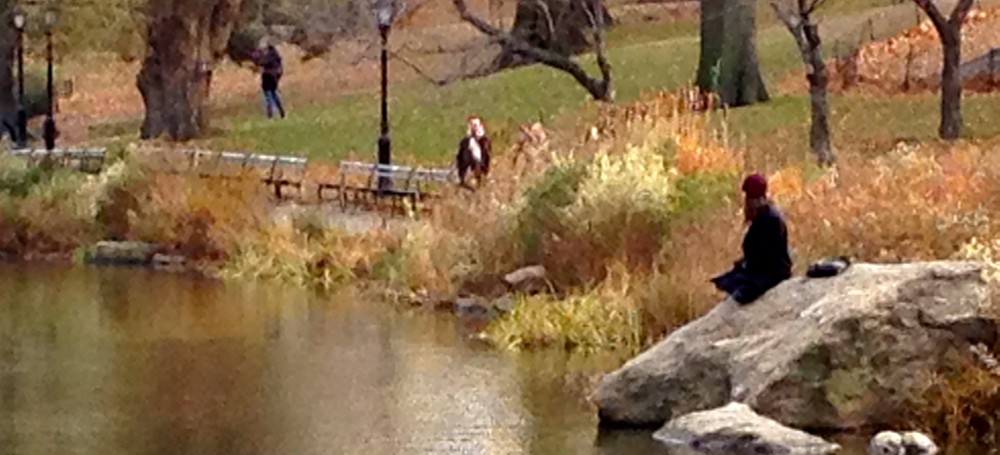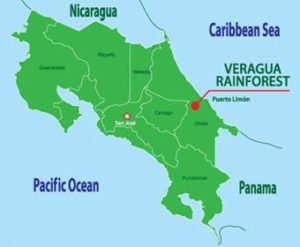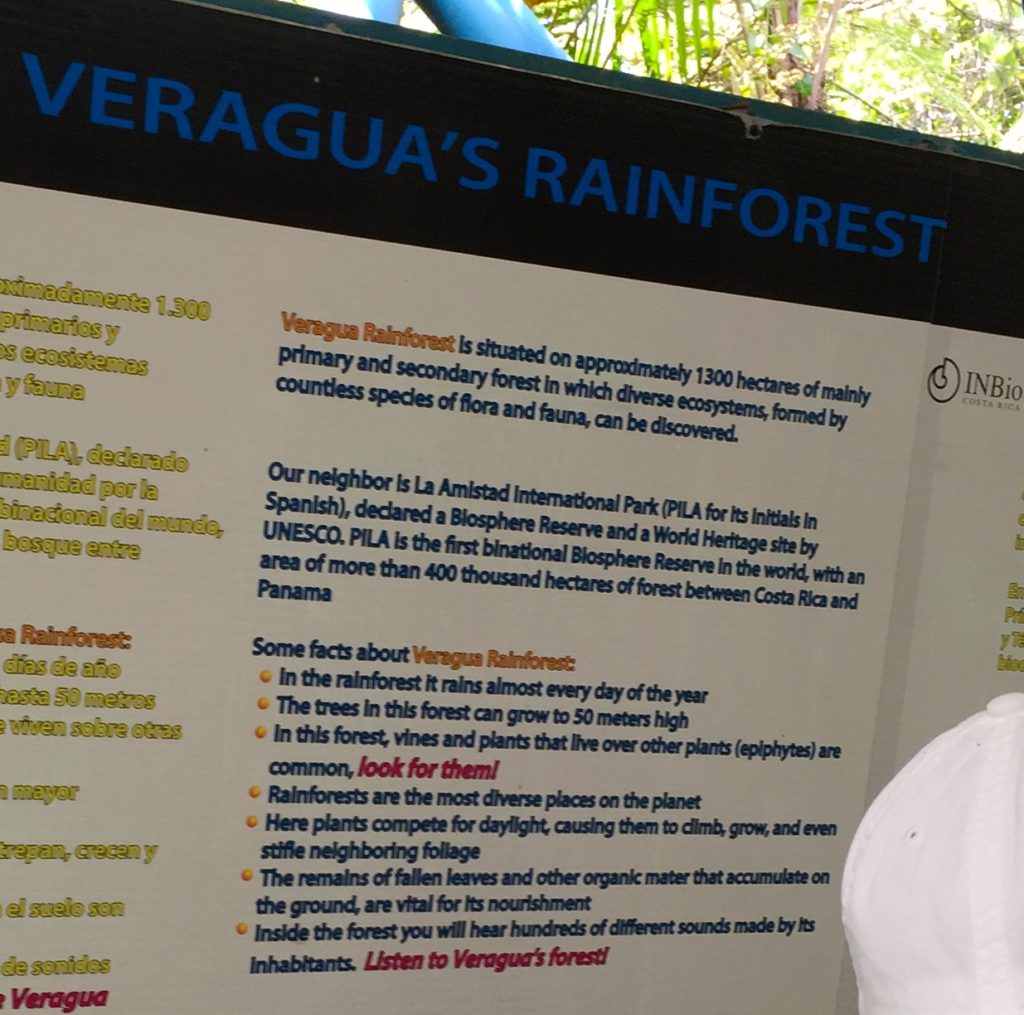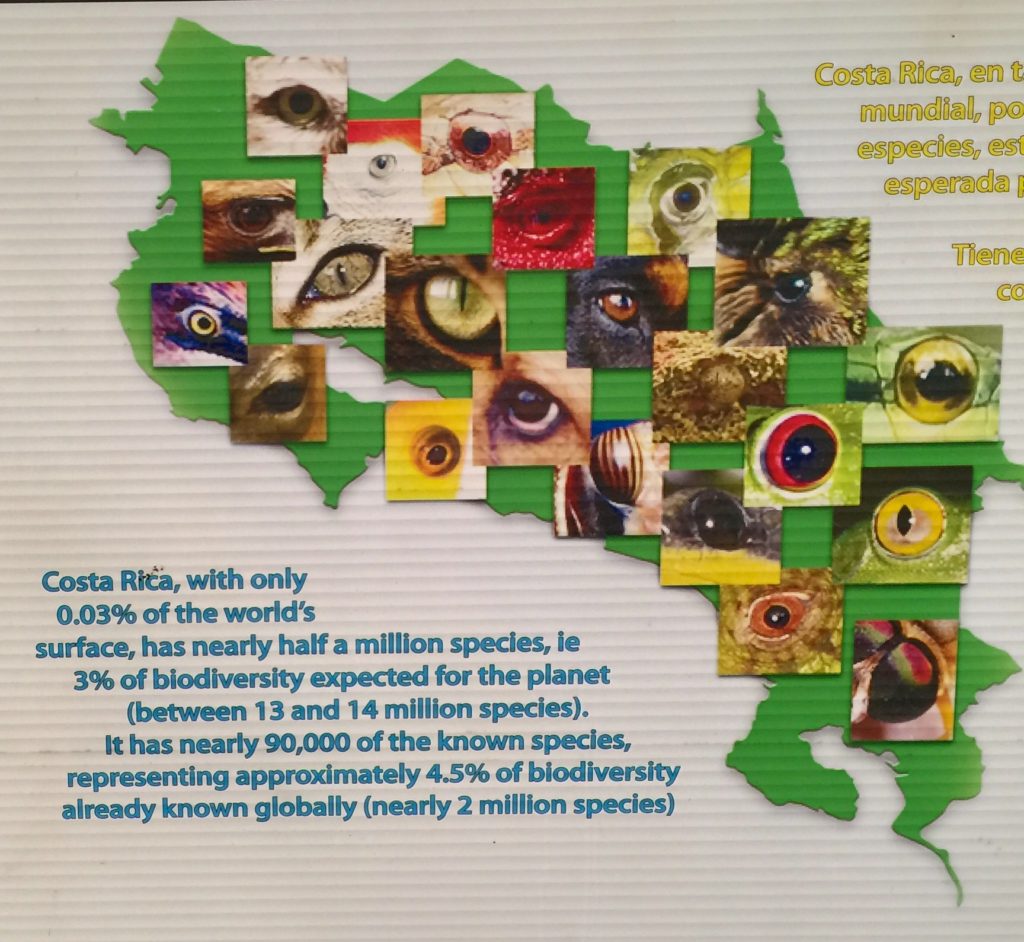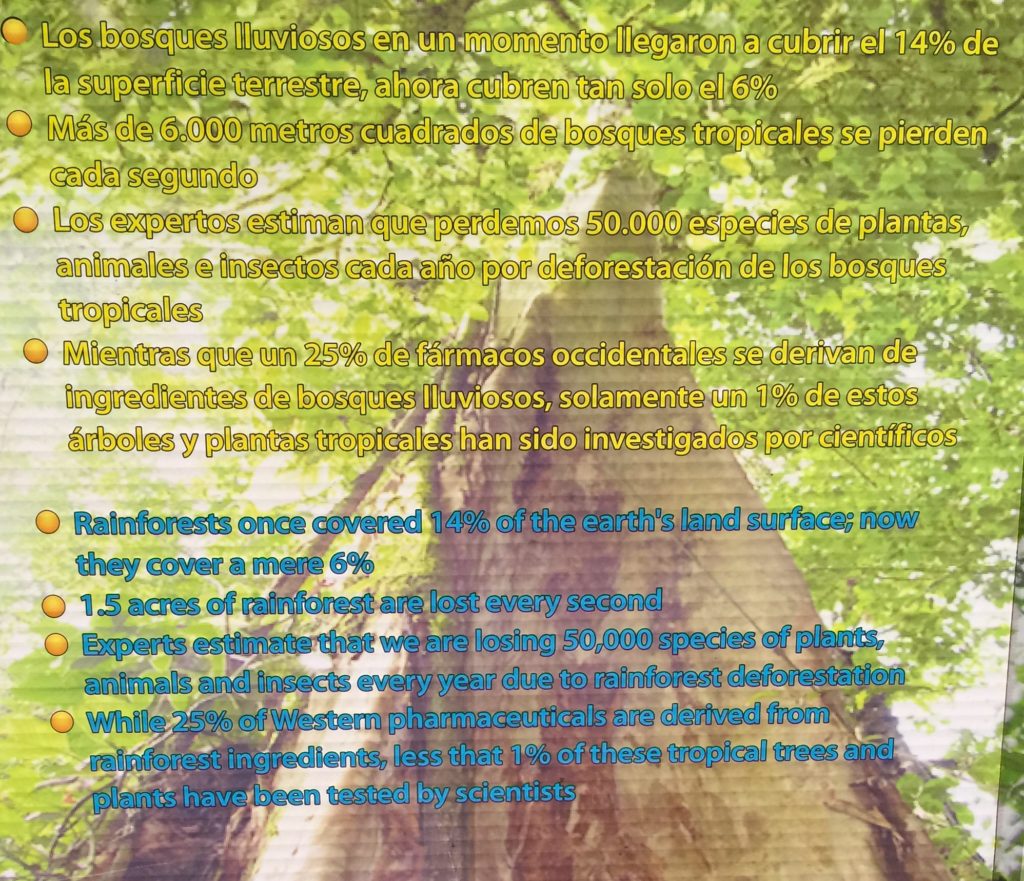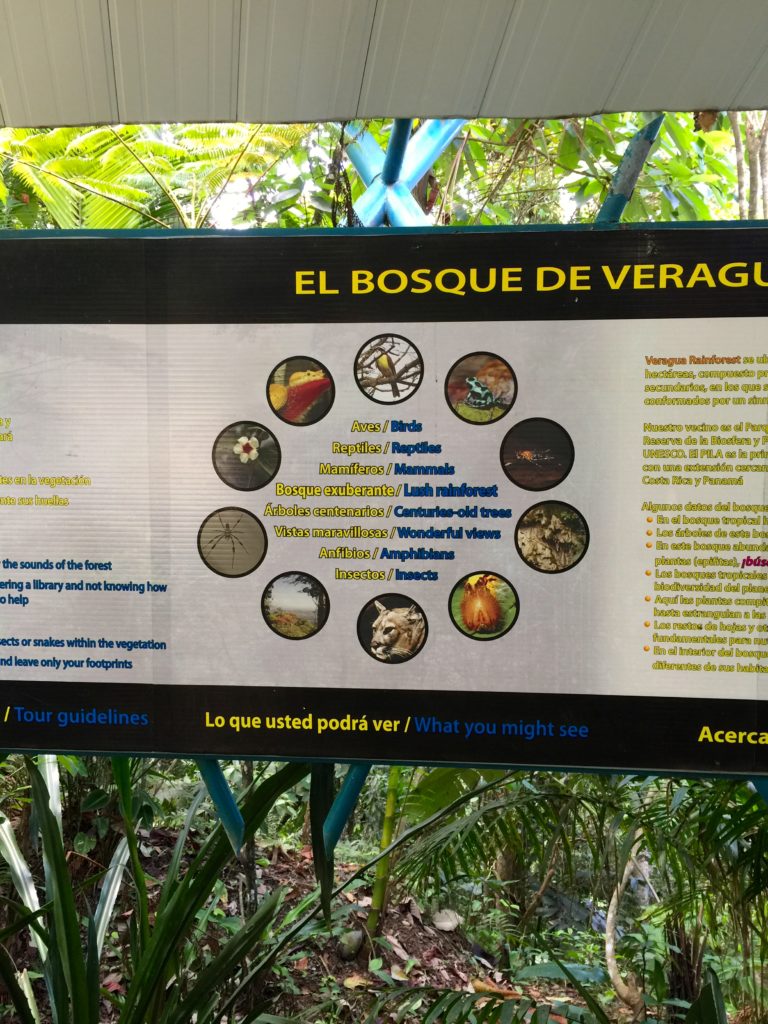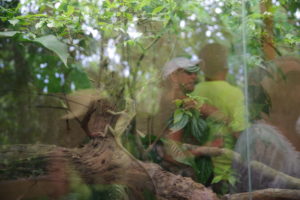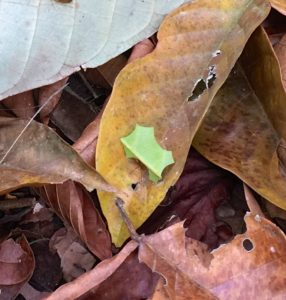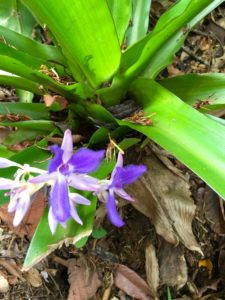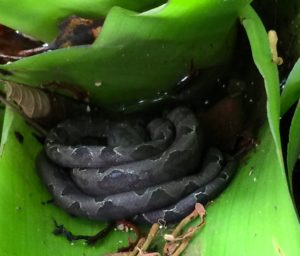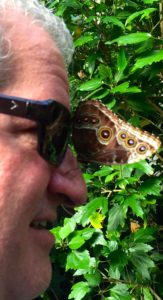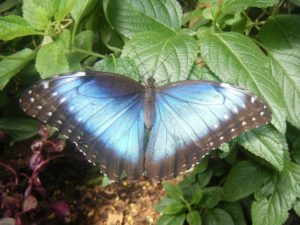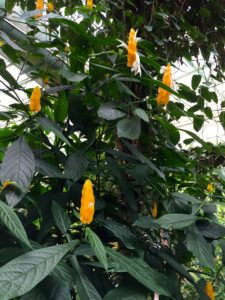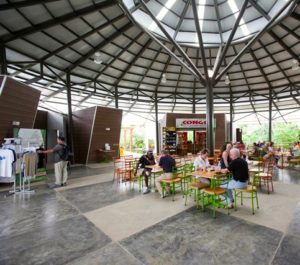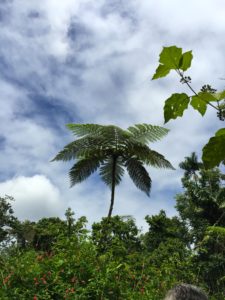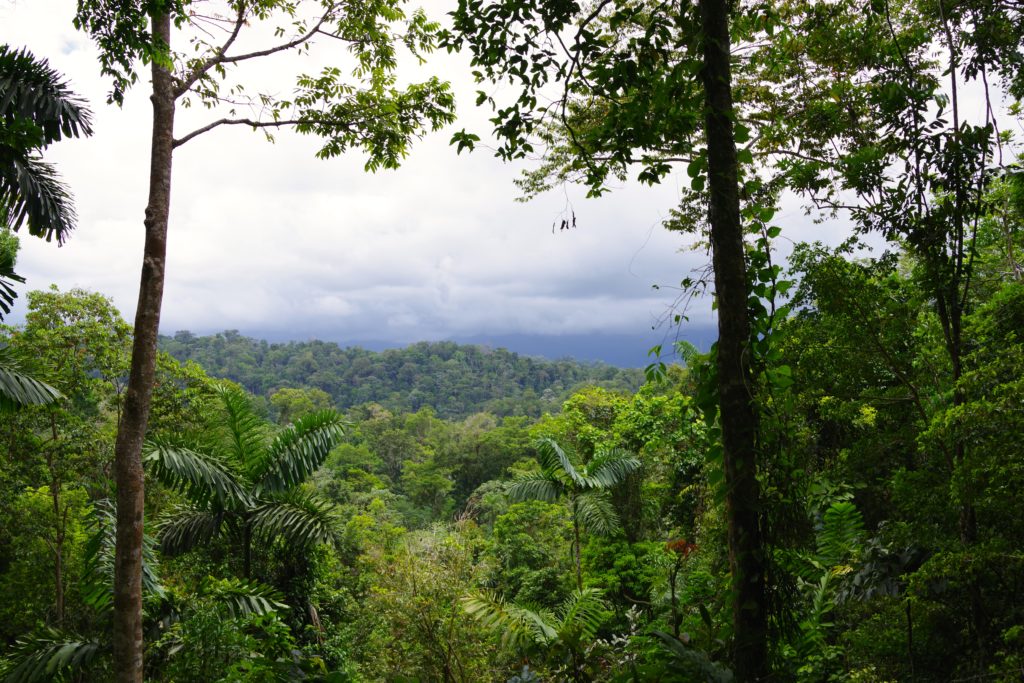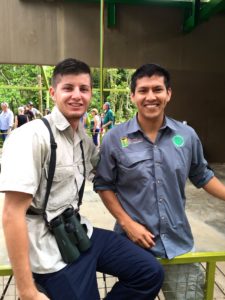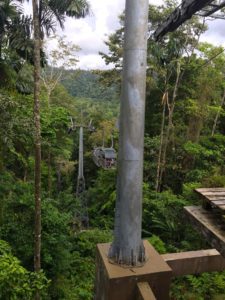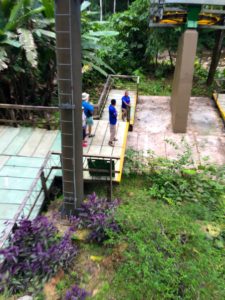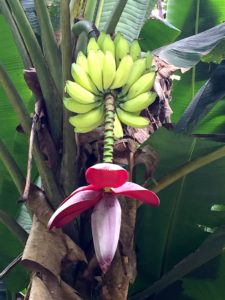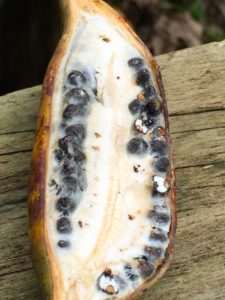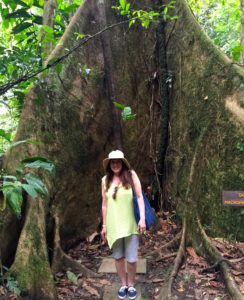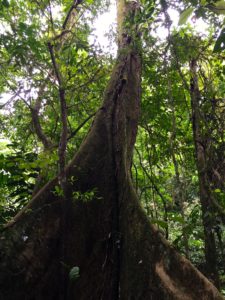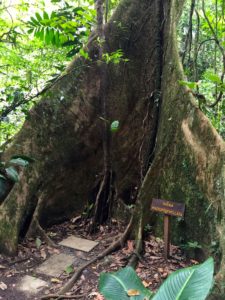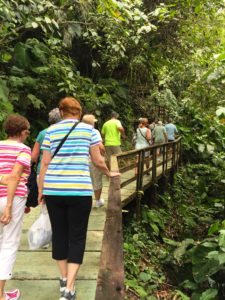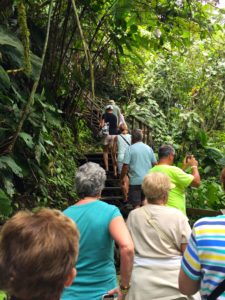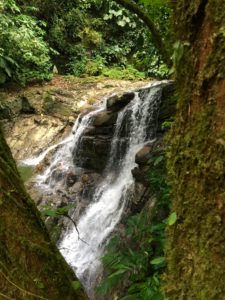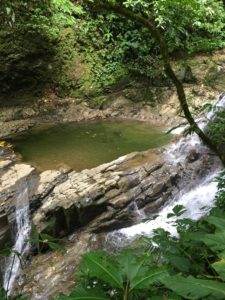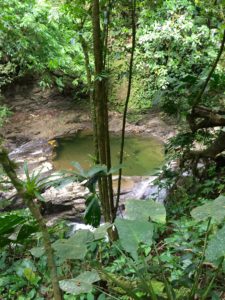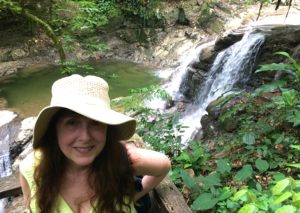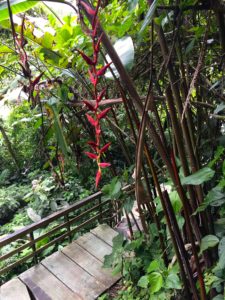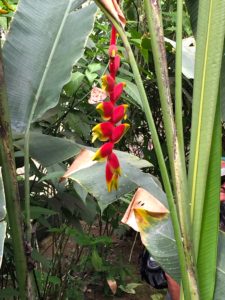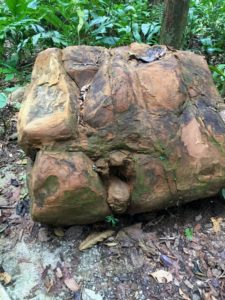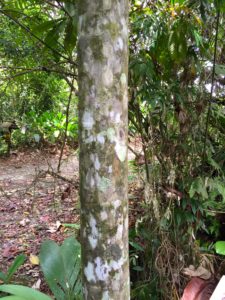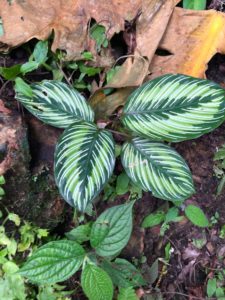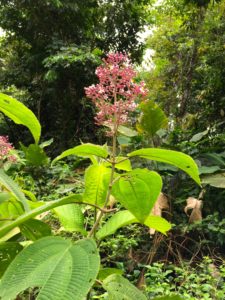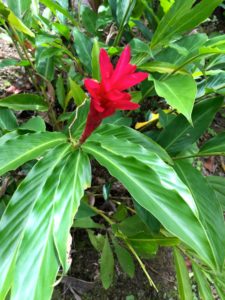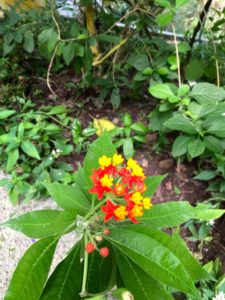It took one hour from Puerto Limon by bus to reach a veritable ecological paradise, the Veragua Rainforest!
There were plenty of other shore excursions offered by our cruise line that we could have taken in Costa Rica, so why did the hubster and I decide to visit the Veragua Rainforest Reserve and Adventure Park?
- Visiting a rainforest was on our bucket list. Naturally, we wanted to visit the rainforest touted as the “creme de la creme of rainforests” by the National Geographic Traveler.
- When we found out that the Veragua Rainforest borders the 479,000 acre La Amistad International Park, which is listed by the United Nations Educational, Scientific and Cultural Organization (UNESCO) as a national heritage site for humanity, it really was a no brainer. (If UNESCO considers the area to be of outstanding value to humanity, well … who are we to argue?) La Amistad International Park is the second largest and most remote nature reserve in Central America. Half the park is located in Costa Rica and the other half is in Panama. Much of La Amistad has not yet been explored because the terrain is less than hospitable.
The day we spent in the pristine Veragua Rainforest and Research Reserve did not disappoint, in fact, it was more than remarkable … it was magical! I only have pictures, but I wish I could have captured the smells and sounds of the rainforest for you as well.
Jumping off the bus, we entered the welcome center. Informative signs in Spanish and English greeted us while we waited for our guides.
Most of the park is wheelchair and stroller accessible via elevated wooden planks.
RAINFOREST RULES! Pay attention to the sixth line down. It says: Do not touch the plants, there could be insects or snakes within the vegetation.
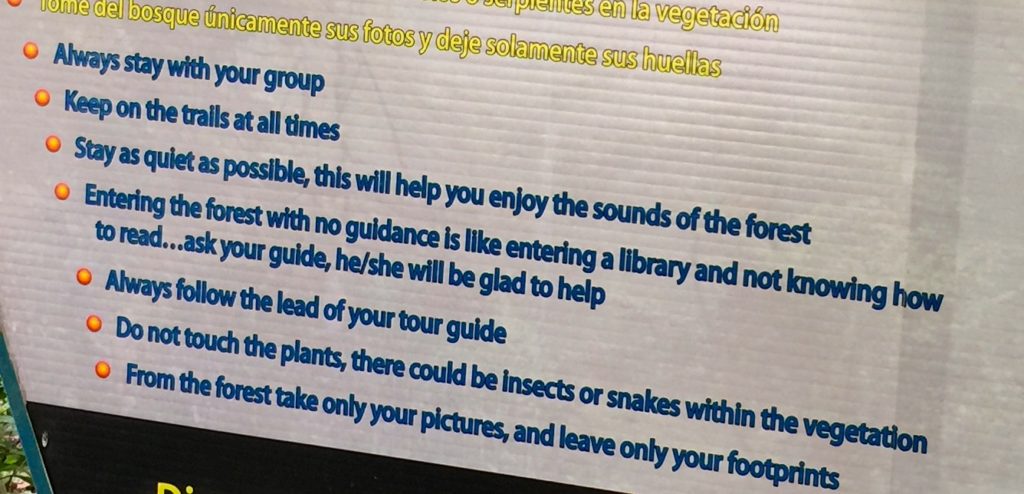
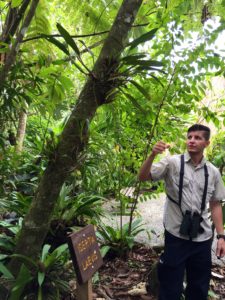 Let me introduce you to our guide for this rainforest adventure, Dennis Quiros Vargus, an amazingly patient, kind, generous, knowledgable, and all around excellent human being. He’s been instrumental in this blog post, making sure I’ve got the right names and information to give you.
Let me introduce you to our guide for this rainforest adventure, Dennis Quiros Vargus, an amazingly patient, kind, generous, knowledgable, and all around excellent human being. He’s been instrumental in this blog post, making sure I’ve got the right names and information to give you.
In this picture Dennis is telling us about the orchids growing on the trunk of this tree. An orchid is a common example of an epiphyte, which are simply plants that live over other plants on their branches, trunks or other raised surfaces. These epiphytic orchids cling to the host plant’s bark with tuberous roots and absorbs nutrients from rain and debris which collects around them. Another common example of an epiphyte would be Spanish Moss.
First up was a visit to the Reptile Habitat. Iguanas, lizards and snakes, oh my! I have to confess, I’m not a huge fan of snakes. I have a healthy respect … fear … okay, a downright phobia of snakes, but I’m working on it. I didn’t take a lot of pics here because when we got to the snakes, I buzzed right through it so I wouldn’t faint.
On our way to the frog habitat some red leaf-cutter ants were marching along in single file carrying big chunks of leaves.
The ants “saw” off pieces of plants that they carry back to their huge underground nests. They tuck the bits of leaves into their tunnels and wait for a certain type of fungus to grow on the leaves. The fungus is their source of food.
The latin name of this flower is Cochliostema odoratissimum from the Spiderwort family. The plants themselves are epiphytes, though they will grow terrestrially if they happen to fall from their host tree. This one was on the ground. A popular ornamental plant, the flowers are deep violet-blue and very fragrant. The leaves have a rosetta pattern. In botany, a rosetta is a circular arrangement of leaves. This plant can collect and retain rainwater in its crevices.
Did you miss anything in that last picture?
I’ll bet you did. Here, let me enlarge it for you.
I didn’t catch this little tree boa curled up inside the plant in the above picture either, but, I assure you, Dennis did, and he pointed the little bugger out to our group. The snake is hiding his big old head in his coils.
The latin name of the snake is Corallus annulatus and it is not poisonous. (Thank the Lord!)
Annulated tree boas have strong prehensile tails so they can easily move about the treetops. These boas also have the ability to change color and are capable of extreme changes in pigmentation. They can change from a dark brown color to a shade of pale gray in very short periods of time.
Next up was the frog habitat. It was fabulous! Because most frogs are nocturnal, Veragua has an exhibit where day is artificially turned into night so people can observe their little froggy friends without venturing out into the rainforest at night.
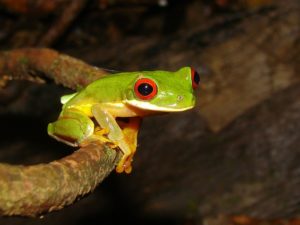 I fell in love with Agalychnis callidryas, a red-eyed frog species that lives in small creeks in and around the Veragua Rainforest. They like to call this frog Ruthie the Rufi.
I fell in love with Agalychnis callidryas, a red-eyed frog species that lives in small creeks in and around the Veragua Rainforest. They like to call this frog Ruthie the Rufi.
I love frogs and I caught a lot of them when I was a kid so I could kiss them. (Don’t ask.) However, I learned it is probably best to leave frogs alone in the rainforest unless you’re an expert.
The golden poison dart frog or phyllobates terribilis color pattern is aposematic, which means it has a conspicuous warning coloration to alert predators of its toxicity. Its skin is covered in a dense alkaloid toxin. In captivity, poison frogs lose their toxicity when deprived of certain foods, but a wild-caught poison frog can retain alkaloids for years.
(Good to know.)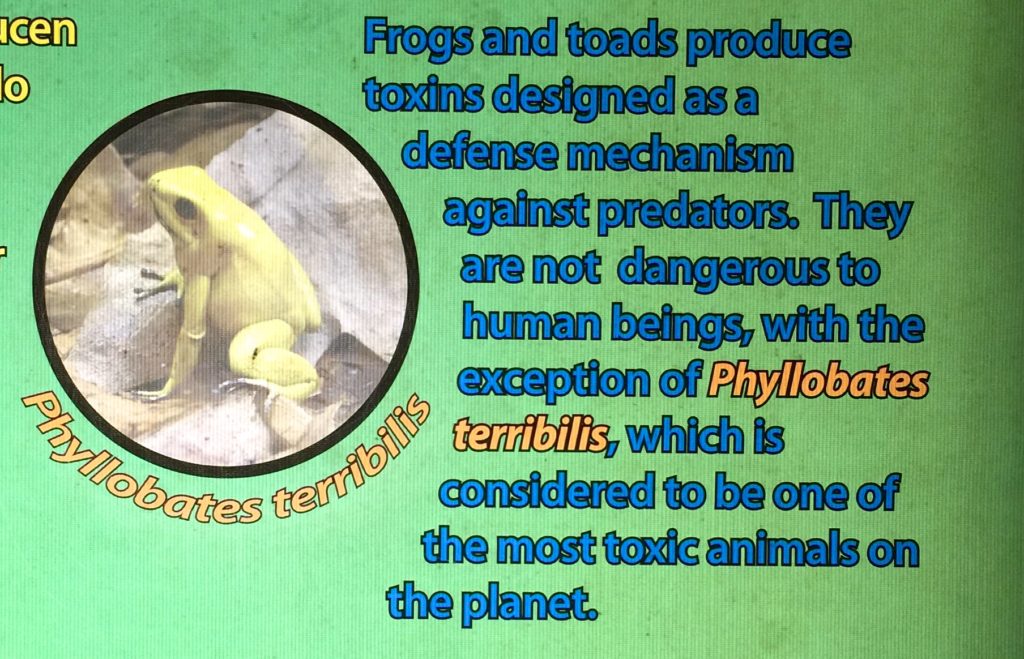 Next we were off to the Butterfly Garden, where gorgeous winged beings fluttered all around us! If anyone has read my book, Rafe Ryder and the Well of Wisdom, you’ve read about the butterfly conservatory I created inside of the fictitious Cliff House. I’m lucky enough to live near the Magic Wings Butterfly Conservatory in Deerfield, Massachusetts, which is my sanctuary in the cold northern winter months of the year, and it always inspires me.
Next we were off to the Butterfly Garden, where gorgeous winged beings fluttered all around us! If anyone has read my book, Rafe Ryder and the Well of Wisdom, you’ve read about the butterfly conservatory I created inside of the fictitious Cliff House. I’m lucky enough to live near the Magic Wings Butterfly Conservatory in Deerfield, Massachusetts, which is my sanctuary in the cold northern winter months of the year, and it always inspires me.
We watched in delight as the butterflies flitted and floated gracefully among their native flora. Then we visited a glassed in research lab where scientists study the many wondrous creatures of the rainforest.
This Blue Morpho Butterfly landed on the hubster’s nose. It’s latin name is Morpho peleides. With its wings folded, it is perfectly camouflaged for the rainforest floor where it spend much of its time.
This is the Blue morpho with its wings open. It’s one of the largest butterflies with a wing span of 5 to 8 inches.
This beautiful plant was located in the butterfly enclosure. The latin name is Pachystachys lutea, the common name is the Golden Shrimp Plant. It is native of Peru, but also very common in tropical and subtropical regions.
We grabbed a yummy lunch at the Veragua Rainforest Cafe, before heading off to take our aerial tram ride to the Victoria River Canyon floor with Dennis still faithfully pointing out thrilling things for us to see.
This is a tree fern belonging to the family of Cyatheaceae. These are the world’s tallest tree ferns. They can reach 32.8 ft tall. Some groups of tree ferns are very ancient and date back to the Jurassic and Cretaceous periods. The trunk of these ferns are often used by epiphytes.
This view of the Veragua Rainforest was so spectacular, it took my breath away!
Here’s our guide Dennis and his friend, Julian Solano, the resident butterfly expert waiting with us at the aerial tram station.
This ride was so much fun!
No I didn’t take this picture. t really wanted to see one of these little beauties though! A three-toed sloth. I would have taken a two-toed sloth as well. I wasn’t fussy! I think they are the cutest little furry creatures on this planet! Kirsten Bell may be the only other person alive that is as crazy about sloths as I am!!!
Although our guide pointed a sloth out to us in the tree tops, it was too hard for my untrained eye to spot.
I’ve blown this picture up a million times looking for it, but I just can’t find it.
Did you know sloths have the slowest metabolism in the world and only climb out of the tree tops to go to the forest floor to defecate every thirty days. (I’m full of … fun facts, aren’t I?)
This is our tram coming in for a landing on the floor of the Victoria River Canyon.
We chose to take the Puma Waterfall Trail which took us to a 65 foot two-tiered waterfall. We saw so many interesting things along the way!
Wild bananas.
Eighty to ninety percent of the mass inside a wild banana is comprised of big hard seeds. Once you dig the seeds out out of the banana, there isn’t much free pulp to eat. The bananas we eat in North America have been cultivated to be free of these seeds.
Here you can see a bud emerging from the trunk of a wild banana plant which had been cut down. The latin name is Musa acuminata, the family is Musaceae. Wild bananas are the progenitors of the commercial bananas we eat around the world today.
This tree is an example of the Dussia macroprophyllata which can grow up to 130 feet tall (40 meters high). Isn’t she magnificent?
Here is our group heading to the Puma Waterfall.
There are about 150 steps (up and down) to climb to get to the waterfall.
This old Momma made it to the observation deck of Puma Falls, a little overheated, but still smiling.
The latin name for this plant is Heliconia longa, otherwise known as a Hanging Lobster Claw. They are the perfect host flowers for birds as they produce a sweet nectar. Hummingbirds especially love them. Also the flowers are popular with florists and are used in flower arrangements.
Here is another Heliconia plant, the latin name is Heliconia rostrata. In Costa Rica there are 35 naturally occurring species of Heliconia. There are 200-250 species of Heliconia found throughout Central and South Americas.
Even the rocks are amazing in this rainforest. I am saving this for a writing exercise to do with some creative writing students. I found inspiration every where I looked in Veragua.
Dennis told us that it is common to find different colored spots on the trunks of trees in the rainforest. These are lichens, a composite organism that arises from algae living among the filaments of fungi. It it a symbiotic relationship, which is an obligatory biological interaction between two species. An obligatory relationship means that one or both organisms depend entirely on the other for survival, and there is a mutual benefit for each of them. In the lichen, the algae produce the energy from the sunlight and the fungus provides water and protection.
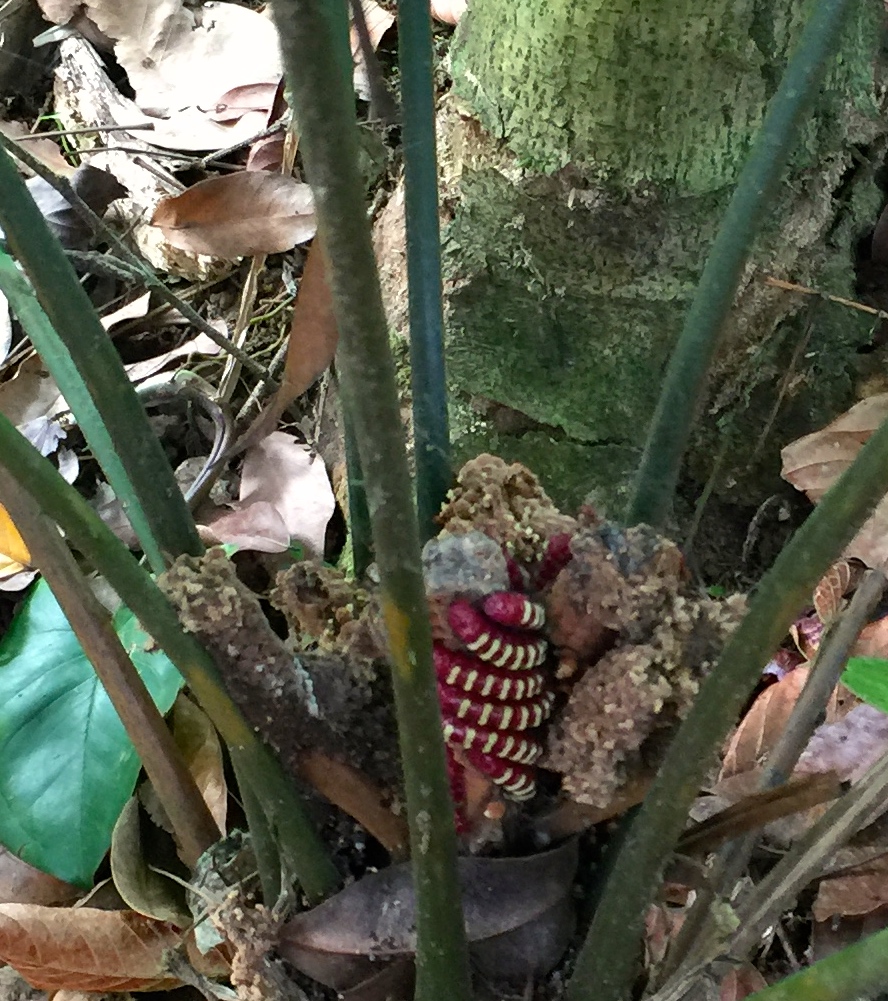 Zamia neurophyllidia is the host plant for the butterfly Eumaus godartii. The plant is found in Costa Rica, Panama and Nicaragua, although it is threatened by habitat loss by human activities. I guess I can actually understand why people wouldn’t want them in their yard or close to their houses because all parts of this plant are poisonous to animals and humans if ingested. These plants are toxic because they produce cicasin, which causes liver and kidney failure, as well as eventual paralysis. No treatment for the poisoning is currently known. (Aye yi yi!)
Zamia neurophyllidia is the host plant for the butterfly Eumaus godartii. The plant is found in Costa Rica, Panama and Nicaragua, although it is threatened by habitat loss by human activities. I guess I can actually understand why people wouldn’t want them in their yard or close to their houses because all parts of this plant are poisonous to animals and humans if ingested. These plants are toxic because they produce cicasin, which causes liver and kidney failure, as well as eventual paralysis. No treatment for the poisoning is currently known. (Aye yi yi!)
In the center of the Zamia plant around the cones, you can see the colorful red and yellow caterpillars, which belong to the Lycaenidae family. This insect can feed on leaves of the zamia and is able to keep and use the plant’s toxins to defend itself from predators. Notice the aposematic coloring screaming danger, danger, danger! (It really is kind of nature to warn us, isn’t it?)
Let’s end with a few more beautiful plants and some lessons from Dennis.
This plant is a Calathea sp (sp means an unknown species). It comes from the family Marantaceae, which are very commonly used as ornament plants. It is popular for the different tones of green in front of the leaves and for the purple coloration on the backs of the leaves.
This flower is Conostegia sp, and the Costa Ricans call it Cow’s tongue for the texture of the leaves. When the fruits ripen, they are popular with many species of birds.
The latin name for this plant is Alpinia purpurata, the common name is Red Ginger. Isn’t it gorgeous? The family of ginger plants is Zingiberaceae. Ginger can be grown as a houseplant and its cut flowers can be use in many types of flower arrangements.
This last beauty is Lantana camera, of the variety Sanguinea. It is a naturalized species found in the tropics. The humid conditions and hot temperatures in tropical regions make it the perfect habitat for this plant. It is one of the favorite plants for many species of butterflies and for that reason is fairly common in gardens in Costa Rica.
The hubster and I were so impressed with how the Veragua Rainforest staff and founders have gone out into the local communities and taught the people there the importance of biodiversity. They spend time educating and encouraging the communities to conserve and preserve their amazing local resources.
In addition, since opening on July 4th, 2008, the Veragua scientists and researchers have discovered almost a dozen new rainforest species. Isn’t that amazing? We had to donate to this worthwhile cause and plan to continue to support them in the future.
My biggest take home lesson from my day in the rainforest: When I see something brightly colored and pretty in the rainforest, it means I probably shouldn’t touch it. Like the big red stop signs in our country, aposematic coloring means stop!
At the end of the day, I said to the hubster, “I’d come back to Veragua in a heartbeat, and the next time I do, I want to do the canopy zipline tour.”
“Of course you do, and just to be clear, you’ll be entirely on your own that day.”
“Where is your sense of adventure?” I asked.
“I’d say it’s located much closer to the ground than yours,” he said.
Oh, hubster. You tickle me. He doesn’t know it yet, but he is so going zip lining with me.
